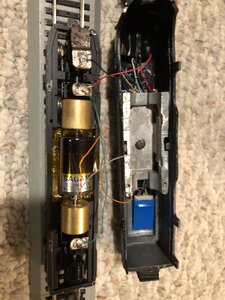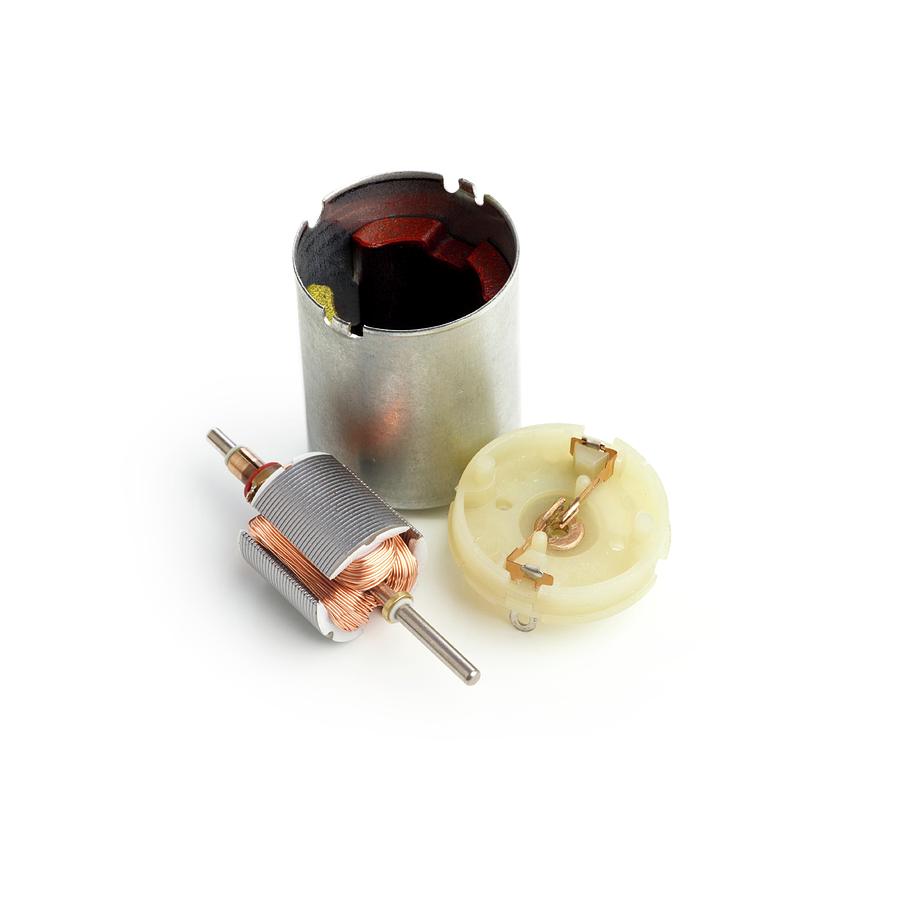victortorgrimson
New Member
Hi,
I am for the first time upgrading a DC locomotive to DCC. Its an Athearn locomotive and I am using a Digitrax decoder. I am greatly benefiting from videos by Dennis461 and the DCC Guy.
I initially had some success, but it quickly failed. I had some sparking inside the engine and I'm pretty certain I fried the decoder. I had followed the recommended approaches to isolate the motor from the frame, however it became apparent to me that I was still getting current transfer from the frame to the motor. So I've done more extensive taping between the frame and motor. Now when the engine is stopped on the tracks, a voltmeter reads about 39 mV when I test the current pickups. And if I touch it to the one current pickup and the motor, I'm only getting 1 mV or less. Is that sufficiently low that I can consider the isolation successful?
I have a new decoder on order, but before I put it in, I'm testing things out with the malfunctioning decoder to reduce the risk that I might fry the new decoder. The old decoder still lights the LED headlight, and occasionally will move the engine a bit, but usually the engine won't move. (The motor had been working fine, and I swapped another working motor in with no change, so I'm fairly certain the motor is fine.) I notice that when I turn the power up, the deocder is getting quite warm to the touch. Is that normal or does that mean I've still got a problem?
I have the decoder touching the bare metal top of the locomotive shell, should that matter?
Thanks for any tips for a newbie,
Victor
I am for the first time upgrading a DC locomotive to DCC. Its an Athearn locomotive and I am using a Digitrax decoder. I am greatly benefiting from videos by Dennis461 and the DCC Guy.
I initially had some success, but it quickly failed. I had some sparking inside the engine and I'm pretty certain I fried the decoder. I had followed the recommended approaches to isolate the motor from the frame, however it became apparent to me that I was still getting current transfer from the frame to the motor. So I've done more extensive taping between the frame and motor. Now when the engine is stopped on the tracks, a voltmeter reads about 39 mV when I test the current pickups. And if I touch it to the one current pickup and the motor, I'm only getting 1 mV or less. Is that sufficiently low that I can consider the isolation successful?
I have a new decoder on order, but before I put it in, I'm testing things out with the malfunctioning decoder to reduce the risk that I might fry the new decoder. The old decoder still lights the LED headlight, and occasionally will move the engine a bit, but usually the engine won't move. (The motor had been working fine, and I swapped another working motor in with no change, so I'm fairly certain the motor is fine.) I notice that when I turn the power up, the deocder is getting quite warm to the touch. Is that normal or does that mean I've still got a problem?
I have the decoder touching the bare metal top of the locomotive shell, should that matter?
Thanks for any tips for a newbie,
Victor



